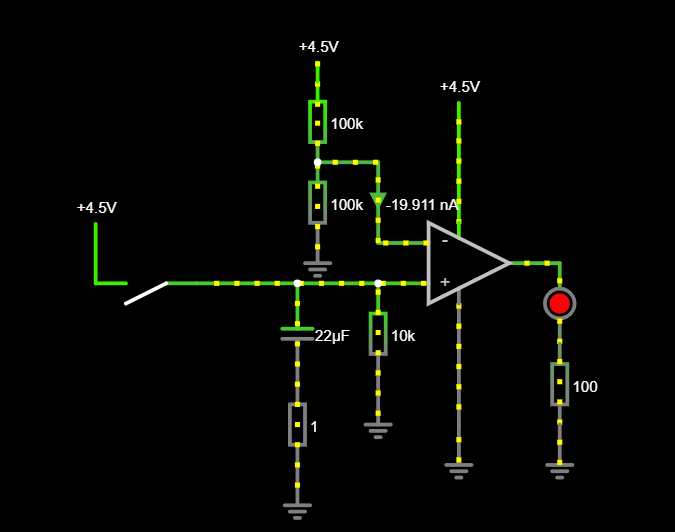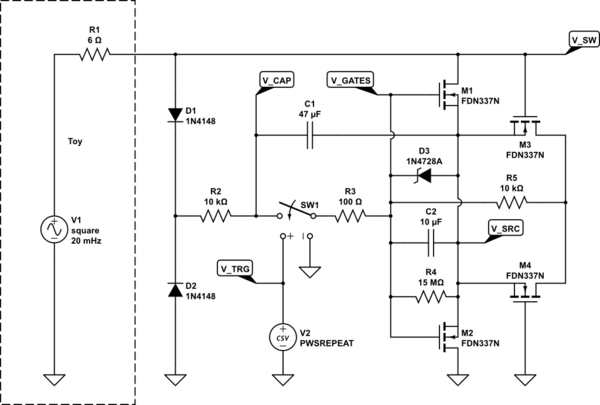I'm working on a project to add a time delay to the button, so that when pressed, the toy plays for, say, 15 seconds and turns off. The toy is intended for children with disabilities and sometimes they simply lack the strength to hold the button for a long time, and the toy only works when the (monostable) button is pressed.
The button is responsible for connecting the power supply, which immediately activates the toy. My idea for adding a delay is to add an encapsulated printed circuit board between the toy and the button. I plan to include a 555 timer circuit on the board and a problem occurred while designing the circuit. Below is the circuit I started with:
Unfortunately, it will not work as I planned - I will connect OUT to the minus of the battery and this will control the disconnection of the circuit. It will probably be necessary to use an external power supply in this case.
Can someone more experienced give advice on how to improve this solution or whether to use something else? An additional difficulty is that the polarity of the toy powering may be different for different toys (connector are wired randomly because button is polarity independent), so the solution should be insensitive to this. It can use toy voltage or external power supply as well. It would be good if it would be energy efficient. Another idea is to use comparator od CD CMOS timer. Toys are powered with 3V or 4.5V and consumes maximally 1A.















